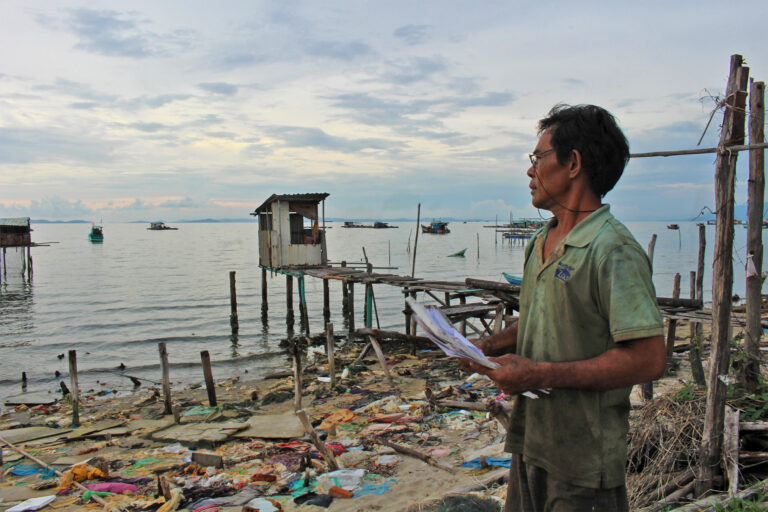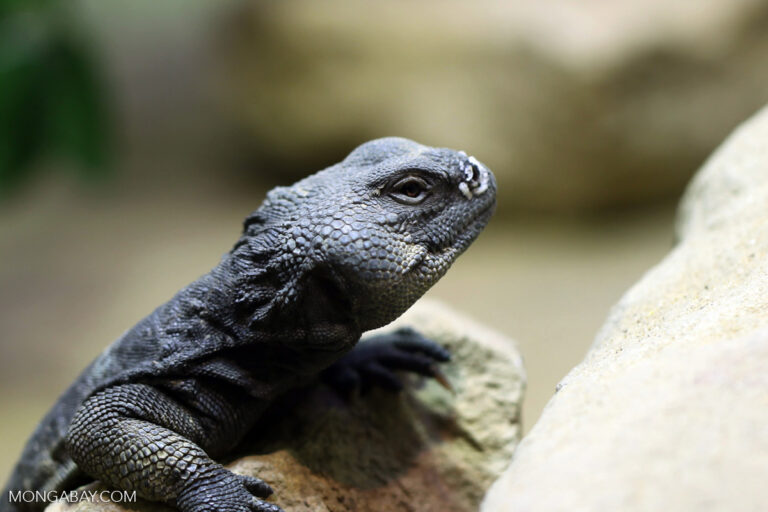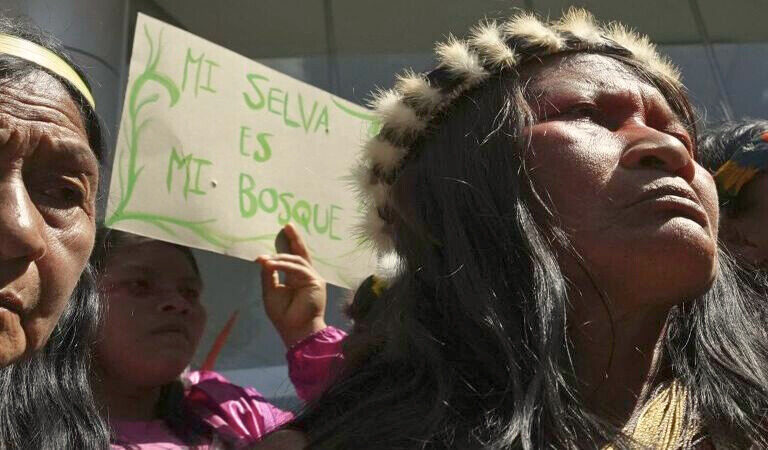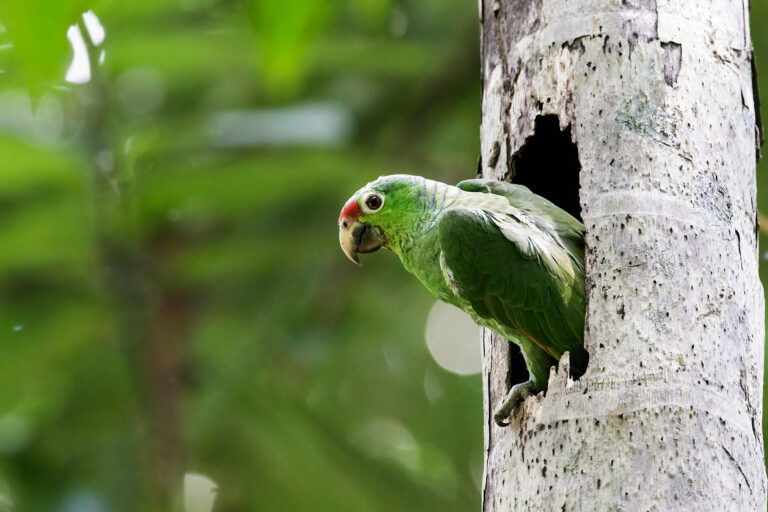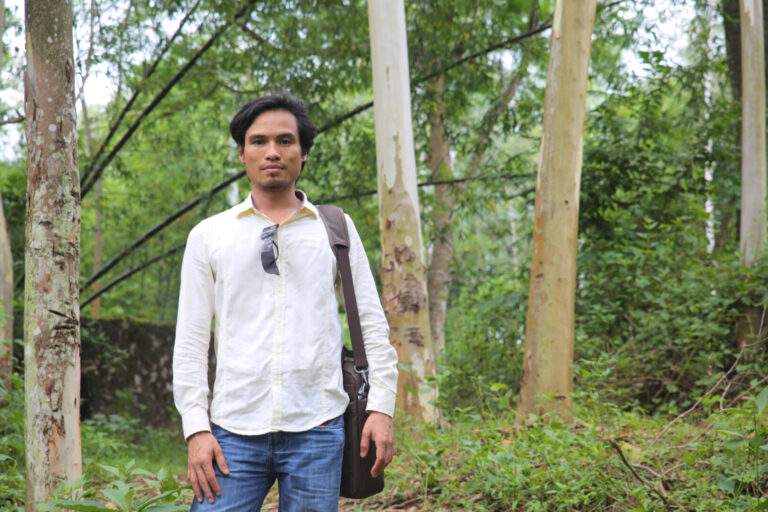- The production of blue jeans, one of the most popular apparel items ever, has for decades left behind a trail of heavy consumption, diminishing Earth’s water and energy resources, causing pollution, and contributing to climate change. The harm done by the fashion industry has intensified, not diminished, in recent years.
- The making of jeans is water intensive, yet much of the world’s cotton crop is grown in semiarid regions requiring irrigation and pesticide use. As climate change intensifies, irrigation-dependent cotton cultivation and ecological catastrophe are on a collision course, with the Aral Sea’s ecological death a prime example and warning.
- While some major fashion companies have made sustainability pledges, and taken some steps to produce greener blue jeans, the industry has yet to make significant strides toward sustainability, with organic cotton, for example, still only 1% of the business.
- A few fashion companies are changing their operations to be more sustainable and investing in technology to reduce the socioenvironmental impacts of jeans production. But much more remains to be done.
Eternally current and always fashionable, blue jeans are among the most-worn articles of clothing on Earth, transcending time, trends, and social class. Their popularity is ubiquitous, so much so that legendary designer Yves Saint Laurent once declared: “I wish I had invented blue jeans. The most spectacular, practical, relaxed and nonchalant. They have expression, modesty, sex appeal, simplicity — everything I hope for in my clothes.”
Unfortunately for the planet, the production of this garment takes a huge environmental toll.
A single pair of cotton jeans consumes between 10,000 and 20,000 liters (2,600-5,300 gallons) of water along its supply chain. Add to that large doses of synthetic pesticides, fertilizers, dyes and other chemicals that pollute soils and waterbodies, impacting wildlife and people, plus major energy expenditures that generate high greenhouse gas emissions.
Those consequences haven’t slowed sales, with more than 70 jeans-related garments sold per second, according to the Science and Industry Museum, a Parisian institution that recently presented the exhibition “Jean.” That equates to more than 2.2 billion items bought yearly.
While some companies are acting as early innovators in sustainability and have taken steps to make blue jeans “green,” the majors of the fashion industry, though declaring themselves committed to sustainability and to “the Jeans Redesign” circular economy guidelines, still work with oil-derived synthetic fibers and with conventional cotton, while chasing the idea that more production is always better.

The Aral Sea cotton catastrophe: A warning to the world
The story of jeans begins with cotton: the vegetable fiber and raw material for making denim fabric. Each kilogram of cotton requires between 8,000 and 10,000 liters of water to grow, or about 960-1,200 gallons per pound. That figure reaches more than 22,000 liters per kilo (2,600 gallons per pound) in some regions in India.
Cotton’s intensive water needs can be sustainable in agricultural areas that get copious amounts of rain, but oddly, the lion’s share of cotton-producing areas in today’s world receive uncertain precipitation, with the crop heavily irrigated by surface water and groundwater — often putting extreme demands on streams, lakes, reservoirs, wetlands and aquifers.
Extracting excessive amounts of water from such sources, a common practice in cotton-producing countries, has already led to the destruction of at least one major ecosystem: the Aral Sea, in Central Asia.
Located mostly in semiarid Uzbekistan, one of the world’s top 10 cotton producers, the Aral Sea has suffered from escalating desertification since the 1950s, when it was the world’s fourth-largest lake. From then on, the Soviet Union began aggressively diverting the rivers feeding the huge inland waterbody to irrigate pesticide-soaked crops, ultimately including 1.47 million hectares (3.63 million acres) of cultivated cotton.
The Aral Sea, once home to 24 fish species and encircled by vibrant fishing communities, shrank to 10% of its original size by 2012. Diminished by excessive water use and climate change-driven drought, it shrank from its original 6.6 million hectares to just 600,000 hectares (16.3 million acres to 14,800 acres). Today, the Aral Sea’s vast expanse of dry lake bottom is the source of salts and carcinogenic pesticide residues, carried on winds that cause throat cancers and respiratory disease.

According to critics, this ecological catastrophe offers a warning of what happens when government policies and fashion industry profits trump a region’s basic ecological needs.
“This is not just climate change, this is an extinction issue,” said fashion designer and environmentalist Katharine Hamnett, commenting on the cotton industry’s harm in the region. “The fashion industry is one of the most polluting industries in the world, causing human misery, enormous cost of life and gigantic environmental devastation.… Conventional cotton (as opposed to organic cotton) has got to be one of the most unsustainable fibres in the world.”
However, the fashion industry does deserve credit for its strong response from 2011 onward to human rights and labor violations in the production of Uzbek cotton. The industry’s implementation of raw cotton production traceability showed that it has the capacity, when motivated, to act on the social and environmental concerns of consumers. But long years of harm still means that a reversal of the Aral Sea’s destruction is unlikely.
The critical threat posed by water-intensive cotton production in semiarid regions is even more urgent today due to intensifying climate change. In Brazil, for example, more than 90% of the nation’s cotton is grown in Mato Grosso and Bahia states — part of the semiarid Cerrado savanna biome whose ecosystems and crops could collapse due to worsening drought in the next 30 years.

But despite this forecast, some Bahia agribusiness farmers are authorized by the state to withdraw up to 1.8 billion liters (476 million gallons) of water daily for free, according to a report by investigative news outfit Agência Pública. This massive extraction of water has not managed to keep pace with global warming-accelerated drought, and the cotton crop saw declines in 2022.
Still, Brazil’s garment industry seems mostly unworried. Newton Coelho, business director for Santista JeansWear, one of the country’s largest denim manufacturers, is typical: “We still don’t face chronic drought problems, as in Texas, U.S.,” he told Mongabay. “The tendency is for irrigation to grow [in Brazil] with the increase in climatic variations and the greater risk of future crops … There is a lot of room for increasing exports [from Brazil], considering the quality of the products, adaptation to fashion trends, and increased actions for the lowest possible environmental impact in the jeans value chain.”
This optimistic view fails to heed researchers’ warnings that heightening drought could lead to aquifer depletion and devastate not only ecosystems, but Cerrado agribusiness too.
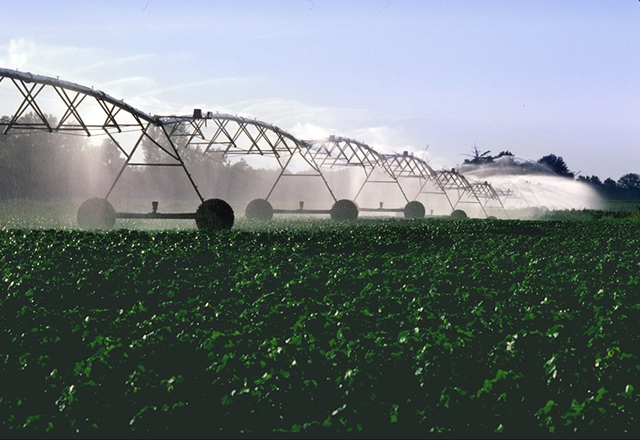
Irrigation and climate change on a collision course
Cotton is currently grown in about 70 countries and is a major source of livelihood for around 50 million family units, most in developing nations. India and China are the world’s largest producers, with 50% of production; followed by the U.S., Brazil and Pakistan. Together, these nations control around 80% of the global cotton supply.
Today, cotton cultivation methods remain similar the world over, requiring massive and unsustainable water use and pesticide consumption, with national regulatory policies failing to keep pace as irrigation demands grow due to increasing extreme weather, including heat and drought.
Embrapa, Brazil’s agricultural research agency, observes that: “A large part of the world’s cotton production is carried out under irrigation. It is an essential practice to obtain high yields. Its main advantages are greater efficiency in the use of fertilizers and the absence of crop loss risk due to droughts.”
Those same water-intensive policies remain entrenched in the U.S., says Cotton Incorporated, an industry-funded not-for-profit research organization: “With rising production costs and the devastating effect of drought on yield, adopting irrigation to supplement rainfall in the humid areas, and improving irrigation in the dryer areas, is becoming increasingly essential to stay competitive.”
In India, most cotton plantations are irrigated with groundwater, competing for use with local communities who rely on aquifers for drinking water and food crops, even as the nation’s monsoons grow more unreliable. Cotton cultivation also consumes 54% of all the pesticides used in the country, although it represents just 7% of total crop production.
More than 90% of commercial crops in China, including cotton, are grown on irrigated farmlands and rely on pesticides, fertilizers and plastic films. Plastic is used to cover the soil, increasing its temperature to promote early cotton growth and conserve water. But according to a 2021 U.N. report, plastics contain toxins and are “a major source of contamination” of soils, posing a threat to ecosystems and human health. Waste plastic “has become a common soil pollution phenomenon in China.”
In Pakistan, cotton production also depends largely on irrigation, and backbreaking work. Small-scale farmers with properties smaller than 5 hectares (12.5 acres), represent 86% of total growers, and during cotton season they already regularly labor at temperatures of between 40 and 45° Celsius (104-113° Fahrenheit). Climate change-driven drought and higher temperatures are increasing there too, threatening crisis among small growers.

Saving the Earth and the cotton industry
The cotton supply chain is already being gravely affected by a warming world. In recent months, India and Pakistan experienced temperatures up to 50°C (122°F). Heavy rains slashed cotton crops in India, while causing an unprecedented humanitarian disaster in Pakistan. The semiarid U.S. Southwest, that nation’s largest cotton-growing region, has been suffering prolonged annual droughts for decades, with its 2022 harvested acreage the lowest in 13 years.
Things are expected to get worse: A report by the NGO Forum for the Future along with Acclimatise, a company specializing in climate change risk management, estimates that 75% of the world’s cotton-growing regions will suffer increased heat stress by 2040. With heat stress comes drought.
“Countries and companies need [to promote] a rapid transition to [cotton] regenerative practices that sequester carbon in the soil, with less use of fertilizers and pesticides, and a reduction in overall [cotton] production through the increase of [denim] recycling,” said Hannah Cunneen, principal program manager of Cotton 2040 at Forum for the Future. “Not managing this on a global scale leads to a world that is not viable. It requires the industry to work together in ways that have not been done before,” Cunneen told Mongabay.
Last year, the NGO released an interactive map incorporating risk scores for 12 climate indicators, such as long-term drought as projected for the 2040s in cotton-growing regions. The map is intended as an early-warning system for “understanding the climatic realities of cotton sourcing origins, which will impact supply chains, and inform appropriate environmental and social action.”

Small growers particularly threatened
Making wholesale industry changes won’t come easy, since small-scale farmers, who grow more than 60% of cotton globally, are extremely vulnerable to climate change and have little economic influence (though this is changing with help from NGOs).
“It is important to recognize the valuable role the small-scale farmers play in the industry, and the pressures that are being placed on smaller farms to produce more for less,” Cunneen said.
According to the U.N. Food and Agriculture Organization (FAO), smallholders who grow cotton in areas of half a hectare (1.2 acres) in developing countries earn just $400 per year on average — leaving them mostly unable to respond to increasing irrigation and pesticide demands. By contrast, a mechanized farm in an agribusiness-dominated nation can gross more than $2 million annually, with larger operations earning more than $50 million.
The chronic financial instability of small cotton farmers in India has made this group a leader in the number of suicides. Nearly 400,000 cotton farmers in India committed suicide between 1995 and 2018, a rate 47% higher than the national suicide average.
“Small and marginal farmers are the worst hit because they have challenges in managing the input costs every year, and post-harvest they are at the mercy of the market, as the price offered by the buyers for their yield varies each year, leading to distress sales,” said Nanda Kishore, a medical anthropologist in public health and co-author of the 2021 study “Cultivating distress: Cotton, caste and farmer suicides in India.”

Petrochemical dyes
Once mature, cotton is harvested and separated from the seeds and waste, then placed in a machine that straightens it into long fibers. These cotton slivers are next placed on spinning machines that twist and stretch them to form yarn. These large yarn rolls are then run through a dyeing machine and drenched in chemically synthesized indigo — the characteristic color that blue jeans wearers know so well.
In the past, this dye was extracted from plants of the genus Indigofera, used to dye fabrics for at least 6,000 years. But after the indigo formula was discovered in 1883, it didn’t take long for German chemical manufacturer BASF to develop an artificial version. “Synthetic indigo is sold worldwide, especially in China,” says the company website. Costing a fraction of natural dye, synthetic indigo dominates the world market today.
After indigo dyeing, the yarn is woven on large industrial looms and the fabric takes shape in a pattern of diagonal parallel ridges of blue and white threads. Before it’s finished, denim also must undergo physical-chemical treatments that, besides turning the fabric blue, minimize shrinkage, make it softer, or give it a fashionably worn-out look. Acids and heavy bleaches are also used. Many dyes and treatments contain highly toxic heavy metals such as lead, cadmium, mercury and chromium; azo nitrogen-compound dyes contain carcinogenic amines.

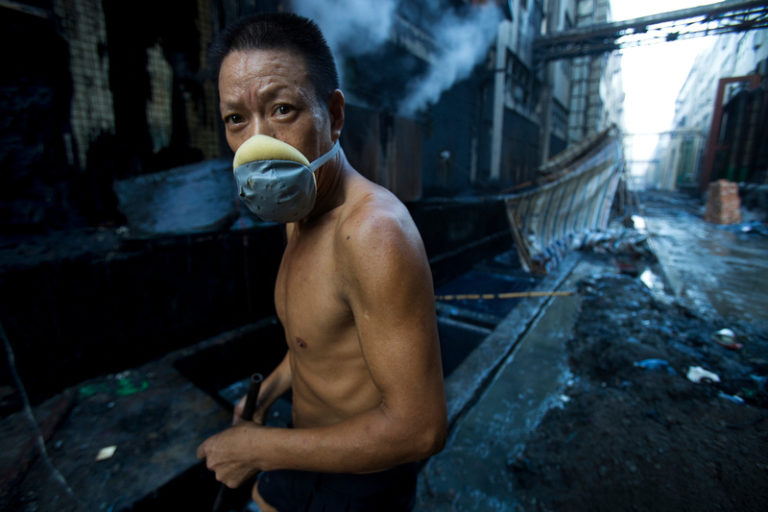
In the developing world, these dangerous substances are often handled by factory workers, who inhale fumes and dust due to a lack of proper protective equipment. Wider environmental contamination also occurs: In 2010, a Greenpeace investigation revealed cadmium levels of up to 128 times above the safe limit in the Chinese city of Xintang, where thousands of denim factories are based.
In Brazil, factories and industrial laundries in the towns of Caruaru and Toritama, known for jeans production, discharge wastewater without treatment into the Capibaribe River. “In certain stretches, the river has the color of indigo. Rural settlements close to the Capibaribe no longer have access to the water,” Tainá Faustino, a public health specialist, told Mongabay.

Petrochemical synthetic fibers
Originally denim was made entirely of cotton, but in the last two decades, polyester and elastane fibers, derived from oil, coal or natural gas, were added for durability and strength, wedding the jeans industry firmly to the petrochemical industry, with its attendant environmental impacts.
Consumer environmental concerns have caused global jeans fashion brands to increasingly adopt recycled polyester, among other synthetics, according to the NGO Changing Markets Foundation in its “Synthetic Anonymous — Fashion brands’ addiction to fossil fuels” report.
But even the shift to recycled polyester, sourced from PET plastic bottles, has its problems: “While recycled polyester requires 59% less energy to produce, but still more [energy] than cotton, and emits less CO2 than its virgin counterpart, these figures do not take into account the impacts of [the original] plastic bottles production,” notes Changing Markets Foundation campaign manager George Harding-Rolls.
Although denim as manufactured today contains fewer synthetic fibers than other fabrics. Harding-Rolls explained that synthetics can prevent jeans from being recycled into new clothing at the end of their life spans. “Some recycling technologies are able to deal with a tolerance of around 10% of non-cellulosic fiber presence. [But] for some stretch jeans the percentage is higher, which makes recycling difficult. And if you are adding in complex blends of other fibers, that is also going to be a barrier.”
Synthetic-content fabrics are also a main ingredient of “fast fashion,” which responds to rapidly evolving consumer apparel trends with high-speed, low-cost production to make cheap, short-lived clothes.
“The high-street fashion industry still operates in a world of tight margins and tends only to move [to act on socioenvironmental concerns] when pushed, or when there is a market advantage. So far there has been little incentive for them to act on synthetics” and move toward more environmentally friendly production, said Harding-Rolls.

Early paths toward a more sustainable future
Some mainstream fashion companies are making changes to reduce environmental impacts, though they also keep turning out millions of jeans products annually that don’t even remotely qualify as sustainable (just 1% of cotton made today is organic, for example). There’s also the potential for higher-priced jeans items promoted with fraudulent green claims of “organic cotton grown without chemical pesticides, chemical fertilizers and genetically modified seeds” due to a faulty, “opaque certification system.”
What follows is a snapshot of a few efforts to adopt ecologically sensitive standards:
Soorty, Pakistan’s largest denim and jeans manufacturer, in partnership with the NGO Organic Cotton Accelerator, is funding more than 1,000 farmers from Balochistan, one of the country’s poorest provinces, to transition to organic cotton over the next four years.
For the past decade, Soorty has also been investing in water- and energy-saving technologies, while reducing chemical usage and introducing new engineering processes to redesign how denim and jeans are made.
Tommy Hilfiger, a PVH Corporation brand, is investing in high tech to reduce its jeans supply chain environmental impacts. In 2017, the group created the PVH Denim Center, a hub that aims to set new sustainability fashion industry standards.
“Denim is a staple in our wardrobe, so we are dedicated to finding innovative ways to create these products,” Nicolas Prophte, vice president of sourcing, production and innovation denim at Tommy Hilfiger, told Mongabay. “The Denim Center works in unison with our key suppliers, like mills and laundries. Staying closely engaged with our supply chain, while being open [about] how we craft our denim products, is crucial to a more sustainable industry.”

Not everyone has been excited about these innovations. Writing on the brand’s website, Prophte acknowledges that some of the industrial laundries PVH contracts with were initially resistant to changing techniques and equipment to reduce pollution. “Our role has been to show them that we have a clear vision and some very precise targets, so that they come with us on this journey” toward sustainability.
According to the company, the Denim Center consumes just 10 liters (2.6 gallons) of water to finish a pair of jeans, while conventional methods use 70 liters (18.5 gallons). Tommy Hilfiger also buys from regenerative cotton farms, which Prophte says “take a holistic approach to landscape, aiming to restore soil health and ecosystems.” Their jeans, however, still incorporate synthetic yarns, though these yarns are made from recycled plastic bottles.
Typically, companies don’t take steps toward sustainability without consumer pressure or endangerment to profits. In 2012, Greenpeace linked jeans maker Levi Strauss with water pollution in Mexico in its “Toxic Threads” report. Levi’s then pledged to reduce hazardous chemical use in its apparel dyeing and treatments, and aimed for the elimination of hazardous chemicals by 2020, which it says it achieved with the Zero Discharge of Hazardous Chemicals Group (ZDHC) across most of its supply chain. Levi’s also says it has worked to reduce water consumption in its finishing process. Levi Strauss & Company did not respond to Mongabay’s request for an interview.

In Brazil, Santista JeansWear manufactures denim cloth using local conventional cotton grown with pesticides because the global organic supply is still too small, explained Santista’s Newton Coelho. But the firm sources “from producers, cooperatives and trading companies, all with ABR [Responsible Brazilian Cotton] and BCI [Better Cotton Initiative] certifications. About 90% of the crops are not irrigated, but depend on rainfall,” which leaves groundwater untouched, says Coelho.
The ABR program was created by Abrapa, the Brazilian Association of Cotton Producers, whose certification attests to product sustainability: protection of waterbodies, preservation of biomes, soil, water and air. According to Abrapa, more than 80% of national producers have the ABR certification.
Abrapa brought BCI licensing to the country, and its website says it promotes “alternative pest control techniques … to reduce reliance on conventional pesticides,” and encourages water stewardship, supports soil health and working conditions, and enhances biodiversity, among other guidelines. Mongabay’s request for comment by Abrapa went unanswered.
Problematically, Brazil remains a world leader in pesticide consumption, with cotton production dominated by large-scale growers who alternate their agribusiness cotton crop with soy and corn production. (About 65% of cotton is planted as a second crop.)
For a partial list of companies working toward denim and blue jeans sustainability, look here, here, and here.
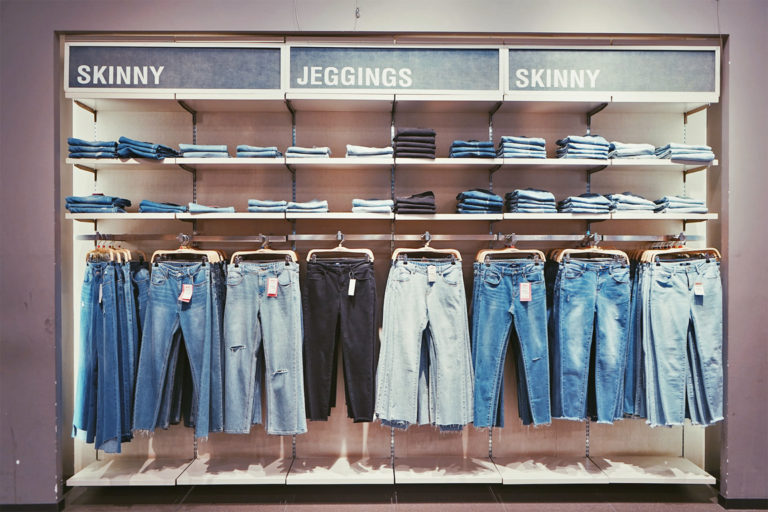
Consumer environmental impacts
Once purchased and worn, a pair of jeans regularly goes into the washing machine. Depending on personal laundry practices, the amount of water and energy used can be huge, according to a study produced by chemical engineer Philippa Notten at the request of the U.N. Environment Programme. Household clothes washing is the single biggest water consumer across the global apparel supply chain, representing 35% of total consumption, with bleaching, dyeing and finishing in textile factories totaling 24%, and cultivation 21%.
“A garment is made once, bleached/dyed/finished once, but washed possibly hundreds of times. If it lasts three years and is washed weekly, for example, that would be 156 home washes,” said Notten, a principal consultant at The Green House, a South Africa-based sustainability consulting firm.
Changing “the way consumers wash and dry their clothes is essential for reducing environmental impact. Jeans washed cold and line-dried will have a fairly small user share of carbon footprint, while washed hot, and dried in a tumble dryer, can be the highest share of the carbon footprint,” added Notten.
Consumers point out that the fashion industry shares in the responsibility for waste at the end of the supply chain. In a survey of 2,000 women shoppers, 46% said denim is the most difficult fashion item to buy, with an average of six pairs of jeans rejected on each shopping trip, primarily because they’re ill-fitting or have poor fabric quality.
Despite those complaints, the global jeans market keeps expanding, with growth expected to climb from $57.3 billion in 2020 to a projected $76.1 billion for 2026.
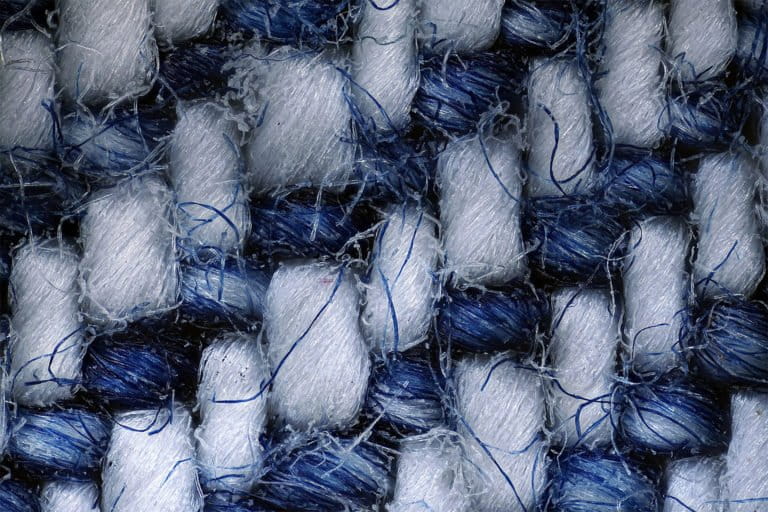
Amid those rosy projections, some jeans makers are seeing the enviro-writing on the wall: “We are entering into an era where constant growth is not working to create global well-being for today, or for generations to come. We need to design the future we want to achieve, and this requires partnerships and a fundamental transformation of businesses,” said Ebru Debbag, global executive director of Soorty.
“There are new models being discussed, such as Doughnut Economics,” an alternative production model focused on achieving a balance between people’s needs and the planet’s needs. “It is ever more crucial to … measure and report impact [and] be able to drive change at scale. Degrowth, or another form of growth, needs to be designed. It will not happen on its own, even if we hold debates around it or publish opinions.”
Notten, of The Green House, agrees. “I think it is the uncomfortable truth, in all sustainable consumption, not just textiles, that ultimately we need to consume less. In fashion especially, that would mean moving away from fast fashion into higher-value products that could be repaired or repurposed, that is, products with longer service lifetimes, and with wealth shared across the value chain.”
Banner image: Ubiquitous jeans make a fashion statement while doing significant environmental harm. Image by Jcjeansandclothes via Wikimedia Commons (CC BY-SA 3.0).
FEEDBACK: Use this form to send a message to the author of this post. If you want to post a public comment, you can do that at the bottom of the page.








